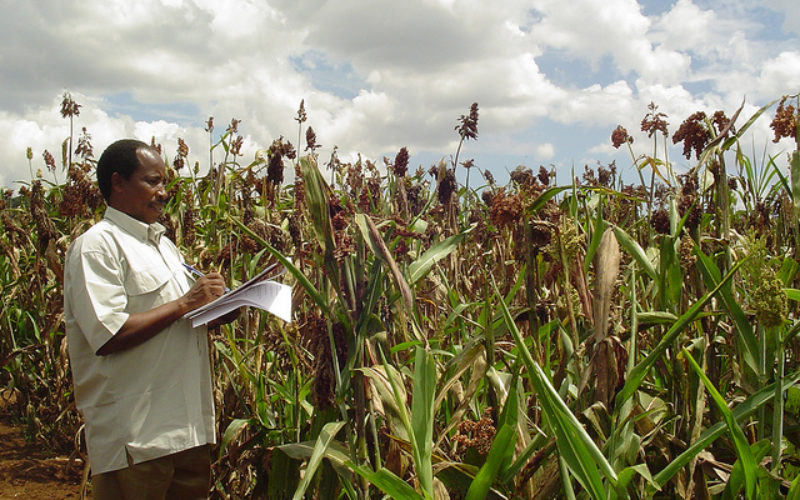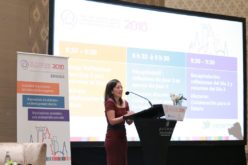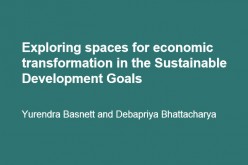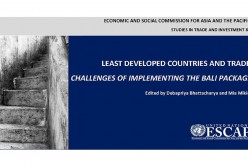by Mustafizur Rahman and Sherajum Monira Farin
There is an urgent need to revisit the metrics of assessing development effectiveness of development cooperation. It is underpinned by significant changes in recent times regarding the concept of development effectiveness, and the emerging new modalities of development cooperation. Major driving factors in this connection have been the shift in focus from aid to development cooperation and the involvement of a large number of new actors. Additionally, a widening range of financing modalities, and most importantly, the need to factor-in the aspirations of the Agenda 2030 in measuring development effectiveness, have changed the game. The metrics of assessing development effectiveness of development cooperation, in the era of the Sustainable Development Goals (SDGs), thus, needs to be mindful of some critically important concerns. In this light, the present article poses five relevant questions. The respective answers are essential for the assessment of development effectiveness within the changing scenario.
Is the assessment framework sensitive to the specific modality of support?
Traditional aid is assessed primarily from the vantage point of the Paris Declaration on Aid Effectiveness. But there is a need for a fresh look at how development effectiveness should be assessed, keeping in the purview the distinctive features of the new forms of development cooperation.
For example, the South-South Cooperation (SSC) involves developing countries both as providers and recipients. As providers, these countries tend to also be concerned with the benefits that will be added to their respective economies. This happens through financial and other forms of support extended to fellow recipient developing countries. This is evident in the various conditionalities that come with SSC, e.g. sourcing them. On the other hand, SSC is geared to addressing particular deficits in the recipient countries, which are perceived to be of high priority e.g. infrastructure. Because of this, assessment of development effectiveness must be sensitive to both provider country concerns and recipient country priorities.
In the case of blended finance deals, recipient countries ought to also assess the crowding-in effect of the Official Development Assistance (ODA) and concessional flows (additionality). At the same time, it should be critically examined whether these deals are causing market distortion, creating monopolies, resulting in private gains at the cost of public resources, or crowding out potential players in national financial markets of host countries.
Furthermore, there is a need to consider the indirect effects of development cooperation interventions, both positive and negative. Given the recent experiences in a number of African and South Asian countries, assessment metrics of development effectiveness need also to be sensitive to debt liability and debt sustainability concerns arising from development cooperation.
Why is it important to assess transparency and accountability in development effectiveness?
Assessing development effectiveness has become entwined with process assessment of development cooperation. It is being increasingly recognised that development impacts are closely associated with the extent to which there is transparency in the negotiation and accountability in execution concerning development cooperation. Designing an effective accountability framework has thus gained increasing importance. This framework may be viewed from three perspectives:
- Vertical accountability between development partners and recipients countries. This also involves tripartite domestic accountability between the government, civil society and the private sector within one country;
- Accountability on the part of the development partners to their tax-payers, regarding the most efficient use of resources. Additionally, development partners have to ensure the appropriate use of national systems, avoid duplication and fragmentation, and thus reduce the transaction costs for the recipient countries
- Accountability on the part of the recipients to ensure proper management of development funds. This helps reduce corruption and leakages and reap the maximum benefit from the development cooperation.
To what extent do evaluation metrics pursue a common but differentiated approach?
Literature landscaping confirms that the principles, against which development effectiveness needs to be measured, include some common criteria. That involves, for instance, national ownership of the recipient country, alignment with national development priorities, and presence of transparency and accountability mechanisms. Assessing these process elements is important, because developmental results hinge critically on their role. For example, in the case of blended finance, where the private sector stakeholders are on the recipient side, and the international financial organisations often tend to be on the driving seat, there is an acute need to assess development cooperation against country alignment and priorities. At the same time, principles and focus of assessment vary across the various types of development cooperation. Capturing both the efficacy of the process and effectiveness of impacts of development cooperation are essential. Measurement of development effectiveness is being increasingly seen in terms of a continuum, ranging from inputs and activities to output and outcomes of development cooperation. The higher the level of results are considered – micro to meso to macro level – the more difficult it is to capture the attribution of particular development intervention in terms of outcomes and impacts. However, a comprehensive measure of development effectiveness must be conscious of the need to capture the multiplicity of developmental outcomes at various levels.
Are existing measurement tools well-equipped to capture development effectiveness in the era of the SDGs?
The SDGs underscore the importance of embedding the triangulation of economic growth, social inclusiveness and environmental sustainability in assessing development effectiveness of development cooperation. The trade-offs and synergies involved in implementing the SDGs need to be factored into the assessment of development effectiveness. The SDGs underpin the need to shift development assessment framework from a provider-centric evaluative metrics to one of recipient-centric assessment. This gives primacy to the needs of the receiving countries and the concerned stakeholders.
A critically important consideration in assessing development effectiveness in this context is to measure it through the lens of the SDGs’ aspiration to leave no one behind. This concept puts the interests of the farthest first. Indeed, in the era of the SDGs, democratisation in the development process and inclusion in development outcomes have emerged as key criteria to measure development effectiveness of development cooperation from the perspective of the recipient countries.
Will the assessment framework require new data and information?
Capturing the effectiveness of development cooperation, both in terms of process and outcomes, and at micro, meso and macro levels, is proving a complex task. To address this, a wide range of data and information will be required, at disaggregated level. This is particularly so if development effectiveness is to be assessed from the “leave no one behind” perspective. In addition, measuring the implications of trade-offs and synergies, and assessing the network effects will also depend on availability of the needed data. A better use of existing data, the generation of new data and the deployment of innovative and big data is necessary. This will adequately capture development effectiveness in recognition of the emerging scenario.
The upshot of the above discussion is to underpin the emergent demand to develop suitable metrics for assessing development effectiveness of development cooperation. The new realities that inform development cooperation architecture, particularly in view of implementing the SDGs, in a cost-effective manner, make this task an urgent one.
1,816 total views, 2 views today







